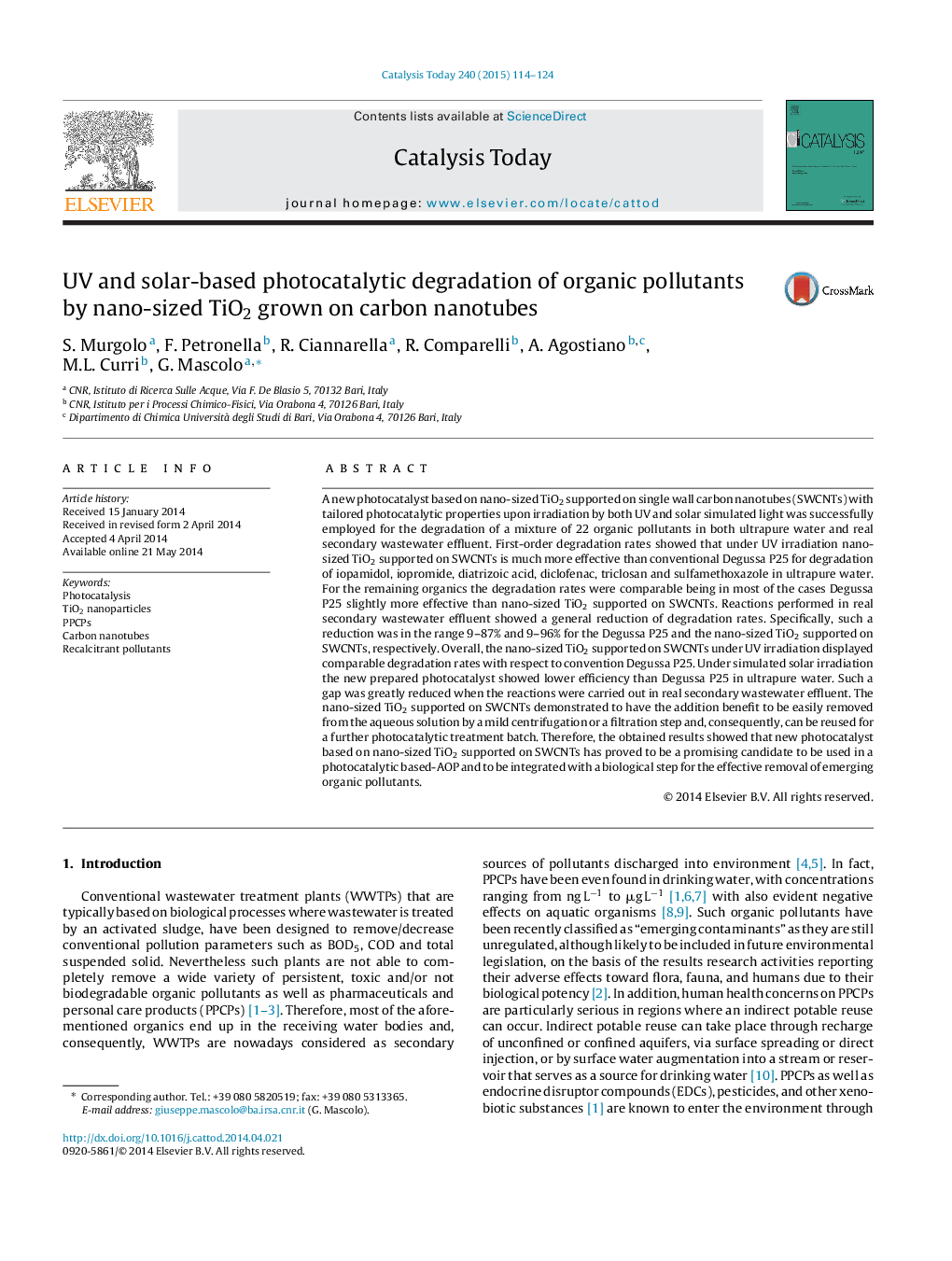| کد مقاله | کد نشریه | سال انتشار | مقاله انگلیسی | نسخه تمام متن |
|---|---|---|---|---|
| 54436 | 47009 | 2015 | 11 صفحه PDF | دانلود رایگان |

• TiO2 nanorods/SWCNTs composite and TiO2 P25 were exploited as photocatalysts.
• Degradation of a mixture of 22 PPCPs was investigated.
• Degradation was studied in wastewater by UV and solar-based light.
• TiO2 nanorods/SWCNTs composite showed degradation rate comparable to TiO2 P25.
• TiO2 nanorods/SWCNTs composite have the benefit to be easily recovered at the end of treatment.
A new photocatalyst based on nano-sized TiO2 supported on single wall carbon nanotubes (SWCNTs) with tailored photocatalytic properties upon irradiation by both UV and solar simulated light was successfully employed for the degradation of a mixture of 22 organic pollutants in both ultrapure water and real secondary wastewater effluent. First-order degradation rates showed that under UV irradiation nano-sized TiO2 supported on SWCNTs is much more effective than conventional Degussa P25 for degradation of iopamidol, iopromide, diatrizoic acid, diclofenac, triclosan and sulfamethoxazole in ultrapure water. For the remaining organics the degradation rates were comparable being in most of the cases Degussa P25 slightly more effective than nano-sized TiO2 supported on SWCNTs. Reactions performed in real secondary wastewater effluent showed a general reduction of degradation rates. Specifically, such a reduction was in the range 9–87% and 9–96% for the Degussa P25 and the nano-sized TiO2 supported on SWCNTs, respectively. Overall, the nano-sized TiO2 supported on SWCNTs under UV irradiation displayed comparable degradation rates with respect to convention Degussa P25. Under simulated solar irradiation the new prepared photocatalyst showed lower efficiency than Degussa P25 in ultrapure water. Such a gap was greatly reduced when the reactions were carried out in real secondary wastewater effluent. The nano-sized TiO2 supported on SWCNTs demonstrated to have the addition benefit to be easily removed from the aqueous solution by a mild centrifugation or a filtration step and, consequently, can be reused for a further photocatalytic treatment batch. Therefore, the obtained results showed that new photocatalyst based on nano-sized TiO2 supported on SWCNTs has proved to be a promising candidate to be used in a photocatalytic based-AOP and to be integrated with a biological step for the effective removal of emerging organic pollutants.
Figure optionsDownload high-quality image (154 K)Download as PowerPoint slide
Journal: Catalysis Today - Volume 240, Part A, 1 February 2015, Pages 114–124